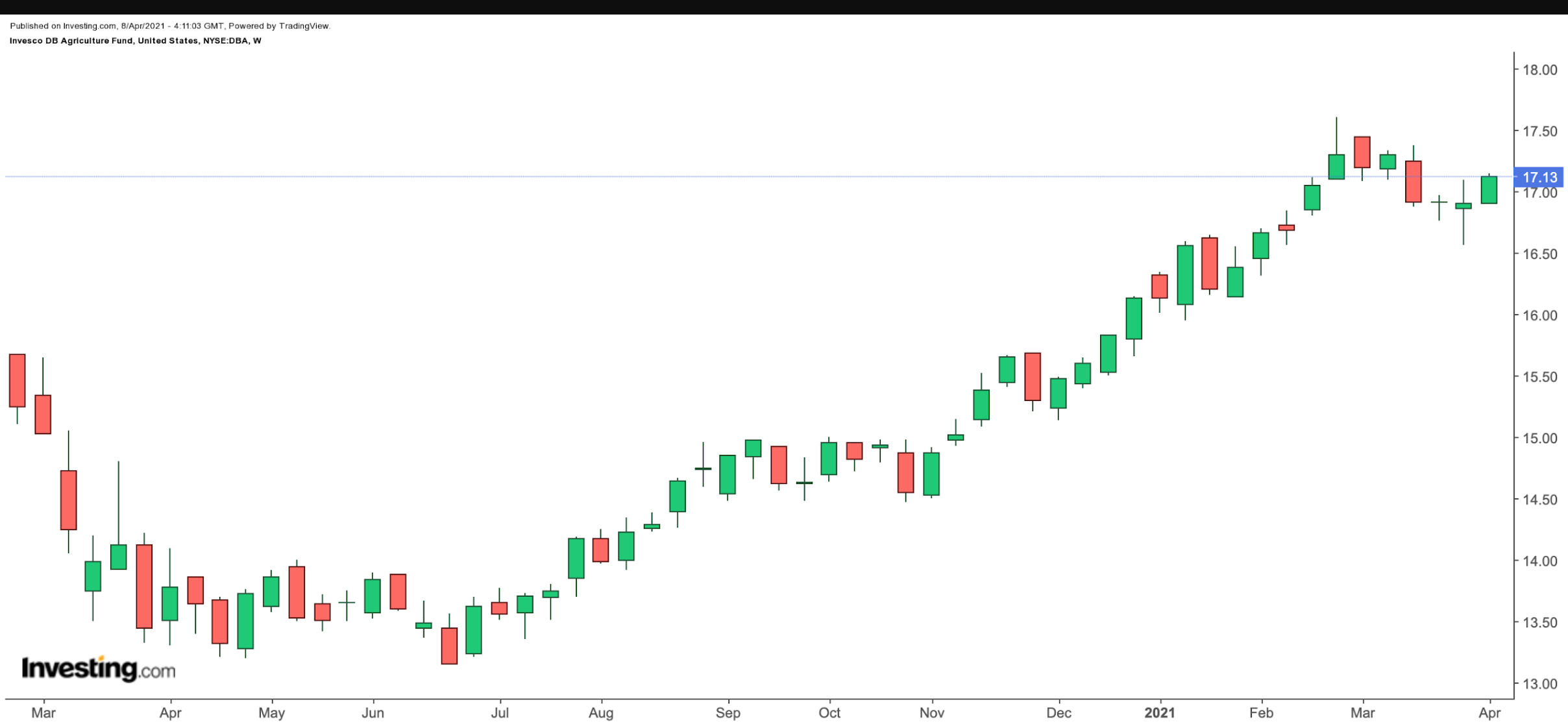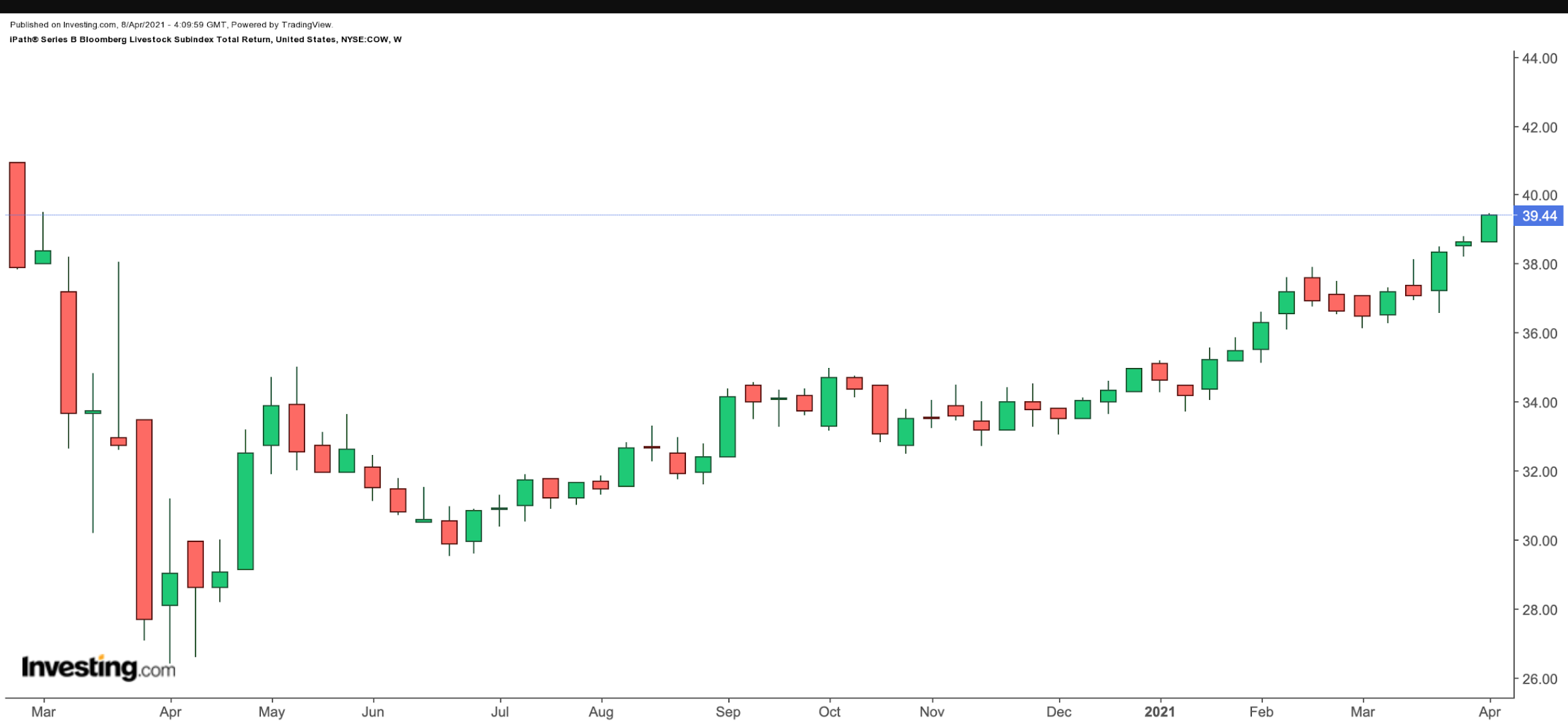Exchange-traded funds (ETFs) that focus on agricultural commodities, such as grains, dairy and livestock, have been getting increased attention in recent months. We previously covered several thematic funds (here and here). Today, we will extend that discussion to two other agricultural funds.
As with all commodities, supply and demand fundamentals, as well farming costs affect prices in agriculture. Grains, like corn, soybeans and wheat, have recently hit multi-year highs.
Due to output and pricing uncertainties in a given crop year, both hedgers and speculators play a critical role in these markets. Recent research led by Martin T. Bohl and published by the Crawford School of Public Policy, Australia, highlights:
"Across different agricultural commodities, the majority of studies concludes that futures markets dominate the price discovery process... Speculators provide liquidity to the market and help hedgers find a matching counterparty to transfer price risk.”
A large number of investors tend to allocate a portion of their portfolio to commodities as they can help enhance diversification.
1. Invesco DB Agriculture Fund
Current Price: $17.13
52-Week Range: $13.15 - $17.61
Dividend Yield: 1.51%
Expense Ratio: 0.85% per year
The Invesco DB Agriculture Fund (NYSE:DBA) enables market participants to invest in ag commodity futures. It started trading in January 2007 and has around $813 million under management.
DBA, which tracks the DBIQ Diversified Agriculture Index Excess Return™, currently invests in 10 commodity futures. Both the index and the fund are rebalanced and reconstituted annually in November.

The current holdings include: corn (13.94%), soybeans (13.91%), sugar (12.24%), live cattle (11.61%), wheat (11.15%), coffee (10.76%), lean hogs (10.03%), cocoa (9.99%), feeder cattle (3.76%) and cotton (2.63%).
Over the past year, DBA has returned around 25%, and year to date (YTD) is up about 5.5%. In late February, the price hit a multi-year high. Interested investors could consider buying the dips. We like the diversified nature of the fund.
However, we have to remind readers that investment in futures contracts can be volatile even through an ETF. Therefore, they would need to research the appropriateness of a fund like DBA for their portfolio objectives.
Those investors interested in learning more about concepts like “rolling-over,” “contango” and “backwardation” might want to revisit an earlier article where we discussed how futures contracts typically behave. In order to avoid physical delivery, traders need to regularly roll from one future contract to another, creating either a positive (in backwardation markets) or negative (in contango markets) roll yield. When a market is in backwardation, it typically means that demand exceeds supply.
2. Barclays iPath Bloomberg Livestock Subindex Total Return
Current Price: $39.44
52-Week Range: $26.40 - $39.45
Dividend Yield: 1.51%
Expense Ratio: 0.75% per year
The iPath® Series B Bloomberg Livestock Subindex Total Return (NYSE:COW) is an exchange-traded note (ETN), which are unsecured debt securities issued by financial institutions such as Barclays (NYSE:BCS). Therefore, it carries the counter-party risk of the issue, i.e., Barclays. We covered ETNs more in detail in this article.

The livestock futures and options markets at the CME Group include feeder cattle, live cattle and lean hogs. However, COW provides exposure to futures contracts on only live cattle (64.84%) and lean hogs (35.16%). The benchmark index is the Bloomberg Livestock Subindex. The ETN started trading in October 2007 and assets under management are close to $25 million.
In November 1964, live cattle became the first commodity to be traded that is alive. Prior to that, it was storable commodities, such as sugar, soybeans, copper or oil. Since then, contracts for feeder cattle and lean hogs have also been added. Cattle and pork producers, packers, consumers, other hedgers and independent speculators now participate in these liquid markets.
A recent report on the industry highlights:
“Ag producers witness higher cost every day. Cattle producers see feed costs up 30-40%, fertilizer prices that have almost doubled. Labor is in short supply and hard to find.”
“The price of lean hogs is historically related to that of livestock feed and to changes in weather patterns. Increased demand from China and competition from other animal products also play a role in price fluctuations.”
China leads pork production and consumption. Illnesses, such as swine fever, or trade wars have a significant effect on the price of the commodity.
Over the past year, COW has returned about 30% and hit a 52-week high this month. Despite the recent gains in both commodities, we are bullish on this segment of the market and would consider buying the dips.
